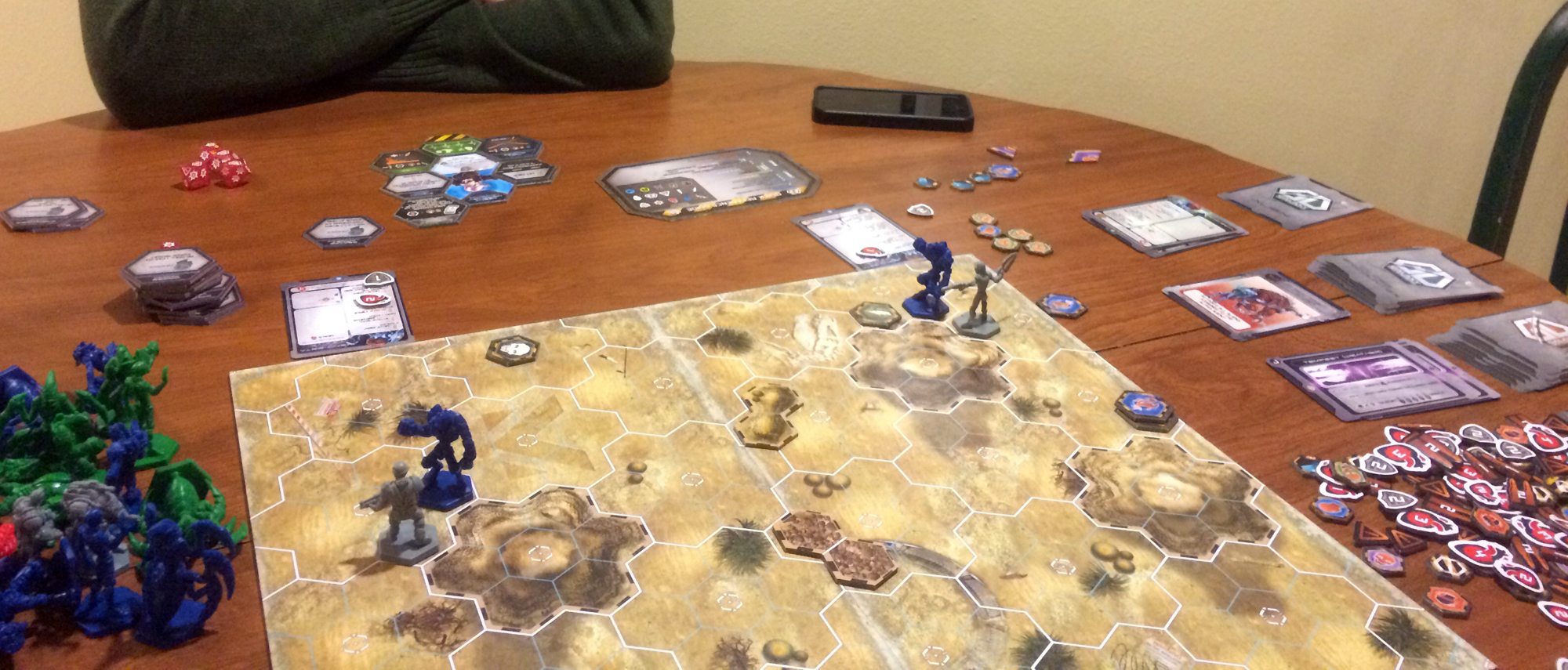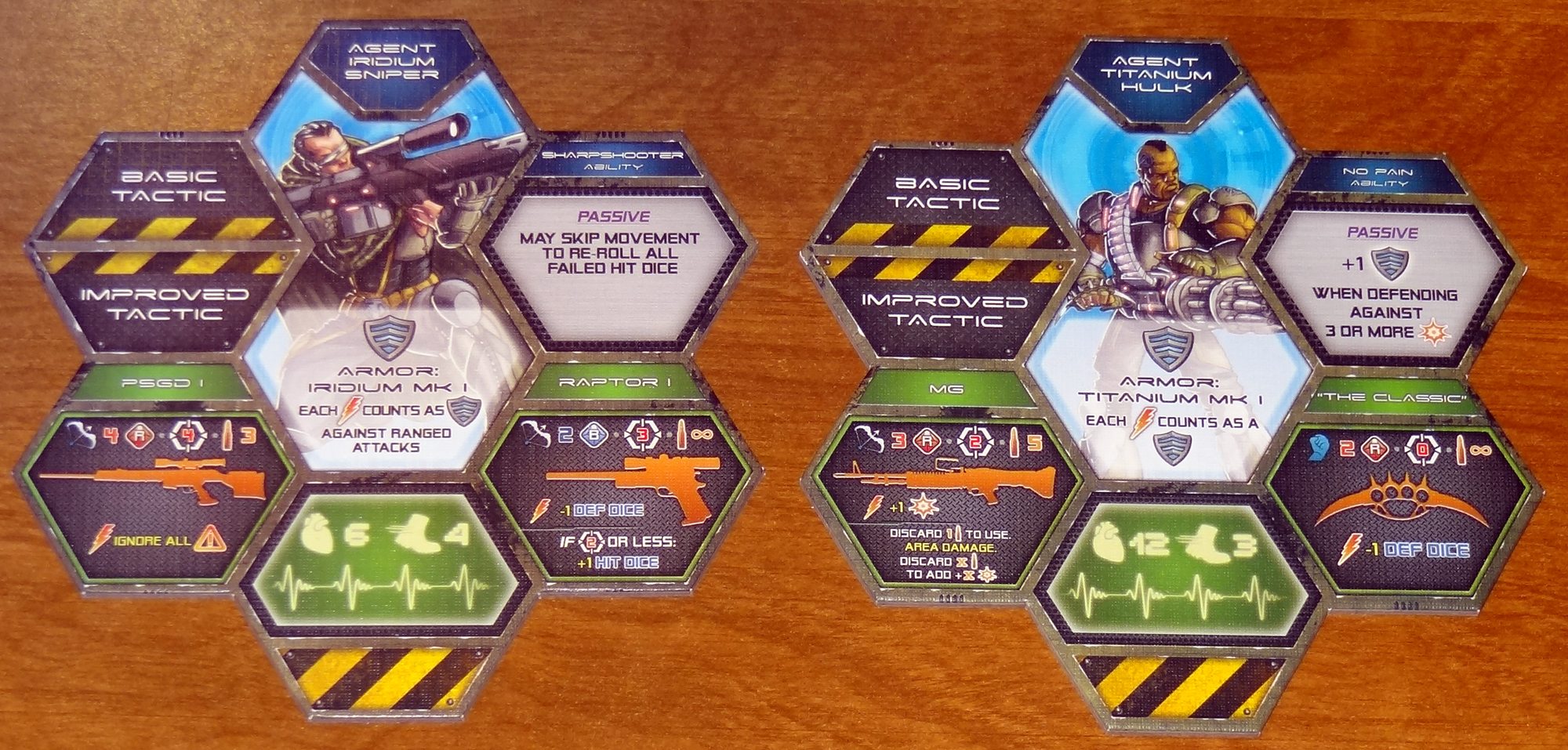
How to play
The rulebook is massive (but actually pretty well-organized, with a good table of contents), and you can download it here, along with the scenario Storybook and rules for Galaxy Ball (a sports game), additional missions, and lots of other things. Rather than trying to explain the entire game here, I’ll just give you a summary of the Core Set here. Check below for more about the expansions.
There are 12 missions included in the Storybook, and playing them in order will create a story—but it’s sort of a choose-your-own adventure. Depending on whether you succeed or fail (or partially accomplish), the book will tell you which mission to play next; it may also have other effects in the next mission. For instance, if you succeed at the first mission, then in the second mission there will be more humans you can rescue; fail, and the second mission becomes just a little bit harder.

Each mission tells you how many players it can support, roughly how long it takes (as short as half an hour or as long as two hours), and how to set it up. It takes a while to set up a mission until you get used to the instructions—you’ll have certain maps and overlays to use, a pool of tokens and markers, and a customized deck of Aliens, Close Encounters, and Events.
You can either play through the entire Storybook as one continuous campaign, keeping your characters and their skills and devices from one to the next, or you can play them as standalone campaigns, in which case the set up will tell you how many devices or upgraded weapons you start with.

Essentially, each player will activate their character, and then flip a Close Encounter card to see which aliens activate. Once each player has gone, then you flip an Event card, which may have a global effect (such as weather), move or teleport more signals (which may be aliens or humans) onto the board, or trigger a mission-specific plot point. These will indicate a section of story to read aloud and the related game effects.

Each character may move, do an action, and engage in combat when they’re activated. You can move up to your character’s speed in any direction, though you’ll deal with obstacles or doors. There are a range of actions, including searching for things in buildings, activating devices, or mission-specific actions like rescuing scientists and planting bombs on teleport points. Combat is a single attack using one of your weapons—each player has two, and the weapon shows you your range, how many dice to roll, and whether you have limited ammo.

There are custom dice used for attack and defense. Starburst icons represent a hit, and other icons can indicate that your gun jams, that you expend ammo, or that you get a special ability associated with your weapon. The defender (whether that’s an alien or you) rolls a number of blue defense dice equal to the number of starburst icons, and tries to get shield icons. Again, there are other icons that can have various other effects.
The Close Encounter cards, flipped after each character is activated, show you which aliens to activate. It may be anything from a specific class of aliens to all the aliens on the board. Once you’ve determined which aliens are activated, then you refer to the specific alien cards—these have a series of conditional statements based on how far the alien is from a target. If the alien is adjacent, you do one thing; otherwise if it’s one area away you do this other thing; and so on.
Each type of alien has its own powers, and the blue versions are stronger and deadlier than the green ones. (There’s only one red alien in the core set, and it’s a monster.) The cards really do give the aliens different personalities: the Xeno-Alpha likes to stand back at a distance and fire its blaster at you, so if you get too close, it backs away. The Aracnos, on the other hand, will pounce on you and drag you toward a teleport point, and it’s very hard to get away (as we found during Mission 2).

The last thing that happens during a round is the Event card: the particular cards and the order is determined by the mission setup. Often these will teleport more signals onto the board (based on the number of players), but sometimes they trigger other effects as well. Each scenario has at least one special event card—when those are flipped, you refer to the Storybook to see exactly what happens.
There are some more mechanics, like getting new devices and weapons, or getting promoted, but that’s basically how the game works.
Since each mission has its own objectives, it’s not just about wiping out all the aliens. You may be rescuing scientists, planting bombs, or looking for alien tech. It’s not enough to just hold your ground and survive—you have to finish your mission before the Event deck runs out.
Next up: the expansions.






I was drawn to this game by the number of miniatures. Would the game still “work” if we painted the figured, but left their bases the game color? Or maybe painted them in a color scheme that matched the game color.
BTW – I would love to see you guys setup a dedicated area for Kickstarters. I’ve been on the look out for a site that will give me a heads up for KS that I would like and you’ve come the closest even though it’s a part time thing on the site.
Hi, John—yes, the game would definitely still work as long as you leave the base colors showing—you just need a way to identify which one is which. I think the expansion also offers some stickers so that you can tell which blue spine critter is which, because there are two of almost every alien and it can be easy to forget which one got wounded and which one didn’t.
As far as a dedicated Kickstarter area … probably the closest thing is our Kickstarter curated page: https://www.kickstarter.com/pages/geekdad but that doesn’t include every project we write about, just a small selection of them (and sometimes projects we HAVEN’T written about). We do try to tag all of the Kickstarter posts, though, so you could also use this link: http://geekdad.com/tag/kickstarter/ to see all posts that have the “Kickstarter” tag.